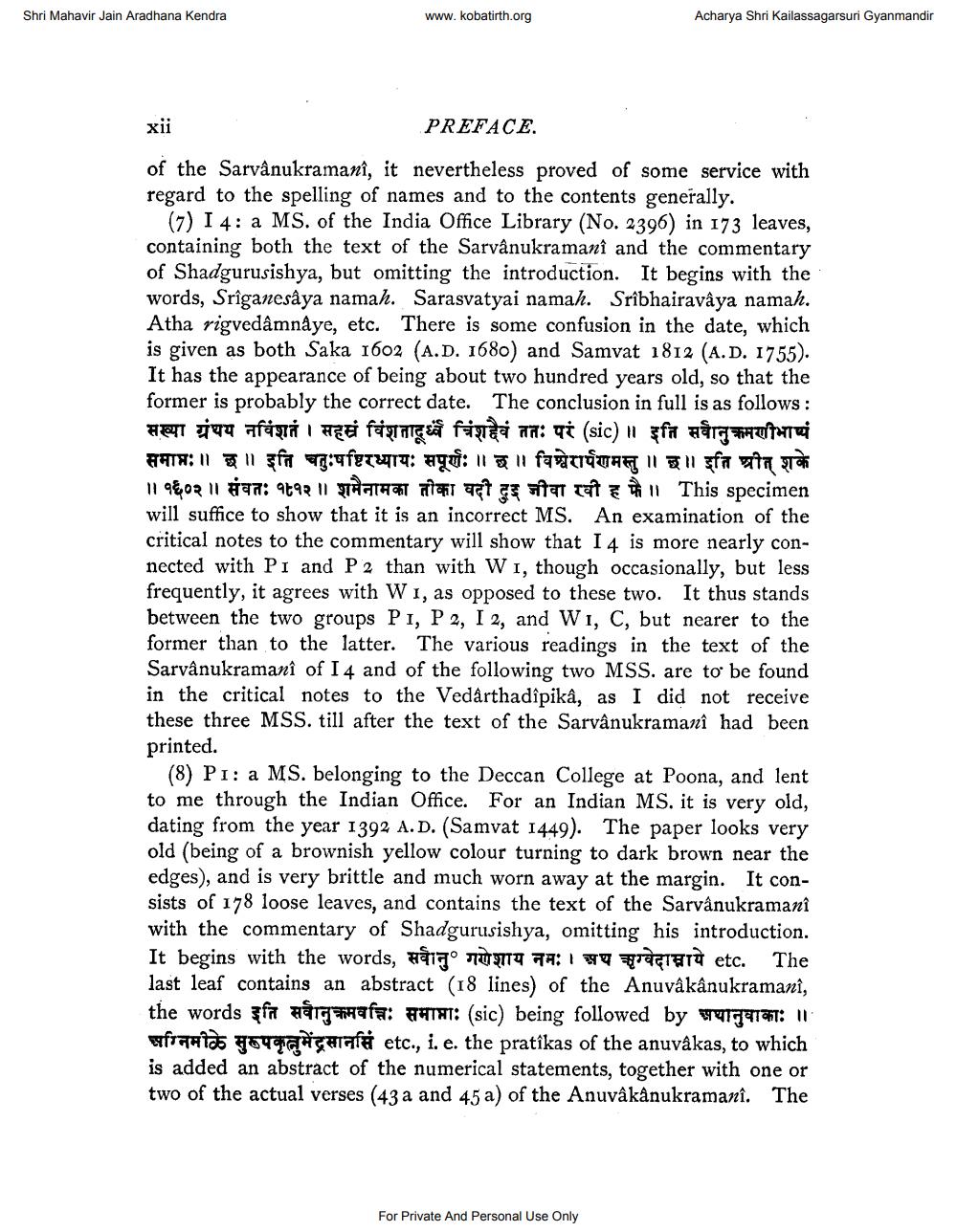________________
Shri Mahavir Jain Aradhana Kendra
www. kobatirth.org
Acharya Shri Kailassagarsuri Gyanmandir
xii
PREFACE. of the Sarvânukramanî, it nevertheless proved of some service with regard to the spelling of names and to the contents generally.
(1) I 4: a MS. of the India Office Library (No. 2396) in 173 leaves, containing both the text of the Sarvânukramanî and the commentary of Shadgurusishya, but omitting the introduction. It begins with the words, Srîganesaya namah. Sarasvatyai namah. Srîbhairavaya namah. Atha rigvedâmnaye, etc. There is some confusion in the date, which is given as both Saka 1602 (A.D. 1680) and Samvat 1812 (A.D. 1755). It has the appearance of being about two hundred years old, so that the former is probably the correct date. The conclusion in full is as follows: सख्या ग्रंथय नविंशतं । सहस्रं विंशतादू त्रिंशदैवं ततः परं (sic) ॥ इति सानुक्रमणीभाष्यं समाप्तः॥ छ ॥ इति चतुःषष्टिरध्यायः सपूर्णः ॥ छ ॥ विश्वेरार्पणमस्तु ॥ छ॥ इति श्रीत शके 11 9808 II 7: 9692 11 TAGTAGT IT act as a rat #1 This specimen will suffice to show that it is an incorrect MS. An examination of the critical notes to the commentary will show that I 4 is more nearly connected with Pi and P 2 than with W 1, though occasionally, but less frequently, it agrees with W 1, as opposed to these two. It thus stands between the two groups P1, P2, I 2, and W1, C, but nearer to the former than to the latter. The various readings in the text of the Sarvânukramanî of I 4 and of the following two MSS. are to be found in the critical notes to the Vedârthadîpikâ, as I did not receive these three MSS. till after the text of the Sarvânukramanî had been printed.
(8) PI: a MS. belonging to the Deccan College at Poona, and lent to me through the Indian Office. For an Indian MS. it is very old, dating from the year 1392 A.D. (Samvat 1449). The paper looks very old (being of a brownish yellow colour turning to dark brown near the edges), and is very brittle and much worn away at the margin. It consists of 178 loose leaves, and contains the text of the Sarvânukramanî with the commentary of Shadgurusishya, omitting his introduction. It begins with the words, vaig UITT 7A: I racit etc. The last leaf contains an abstract (18 lines) of the Anuvâkânukramani, the words yfir varginala: FATAT: (sic) being followed by warga1a: 11
franids 4649 Saare etc., i. e. the pratîkas of the anuvâkas, to which is added an abstract of the numerical statements, together with one or two of the actual verses (43 a and 45 a) of the Anuvâkânukramanî. The
For Private And Personal Use Only




